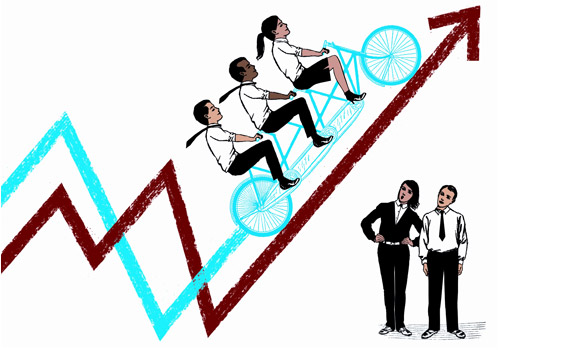
Does the "teamness" of a company’s top management team (TMT) affect employee and organizational performance?
Previous research indicates that a lack of TMT unity can have negative organizational consequences, including a lower quality of strategic decisions and decreased financial performance.
New research by Anneloes Raes, assistant professor of Managing People in Organizations at IESE, indicates the reverse is also true: When teams take targeted actions to develop certain competencies, they can achieve positive results, boosting the organization’s productive energy and increasing employee well-being.
"Some might argue that what goes on behind the closed doors of the C-suite is of no concern to rank-and-file employees," Raes writes in the latest IESE Insight management review. "But this is not the case. TMT behavior does leak out and may quickly infect collective behavior, for better or worse."
Citing research involving 191 TMT members and 5,048 employees from 63 small and medium-sized organizations, Raes and her colleagues found that when a TMT modeled a high level of "teamness," middle managers and other employees were more excited about their work, could better focus their thoughts on their work and worked together more cooperatively.
In her article, "Top Team Behavior for Winning Results," Raes highlights a set of competencies that TMTs and middle managers alike should model, aimed at creating "a more participative form of leadership, which values information, seeks frequent and effective interaction to obtain information, and uses that information as a basis for strategy."
If the top management team is able to model the right competencies, there will be positive ripple effects on an organization’s productive energy, she finds.
"Employees will have greater cognitive capacity to focus on their work, dedicate more energy to constructive thinking, experience fewer hassles when solving work-related problems and generally feel more uplifted in the work they do. This translates into higher job satisfaction and lower turnover intentions."
IESE Alumni Members can access premium content like Raes’s article using their usual login details. Non-members can purchase the article from IESE Publishing or subscribe from the magazine site.
IESE Insight is a quarterly research-based magazine, published in separate English and Spanish editions. Its premium content is linked to articles from the IESE Insight knowledge portal, which contains research and teaching materials, opinion articles, business indices, audiovisual materials and an extensive database of more than 20,000 scholarly references.